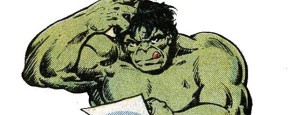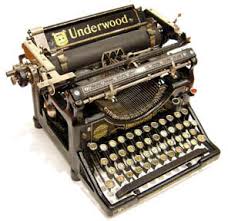More Drafting Thoughts
 In writing about rough drafts the other day I realized that I breezed over an important step — outlining.
In writing about rough drafts the other day I realized that I breezed over an important step — outlining.
I’ve discussed outlining on the site before (just search through my Writing posts if you’re curious) and I’ve yet to settle on any one outlining technique that I use ALL the time. I find that different approaches work in different instances.
For instance, on the Paizo books I used very detailed outlines that went on for some 10k words. I’ve scaled that way back for the current books and right now it seems to be working. I think about the main arcs and threads, who’s in them, what the challenges are, and what happens when, jot that down to make sure I’ve got track of it, and then start drafting (this is AFTER I know who the characters are, what they want, and, particularly, what the villain wants).
 Once I get to drafting, as I mentioned, I sometimes set straight to work, having carefully thought through the individual scene before hand (so long as I know how that scene fits into the scheme of following scenes). But sometimes, if I’m feeling a little unsure, I do a present tense description of what’s happening throughout the scene, which turns into an outline of the scene, to which I later come back and add dialogue.
Once I get to drafting, as I mentioned, I sometimes set straight to work, having carefully thought through the individual scene before hand (so long as I know how that scene fits into the scheme of following scenes). But sometimes, if I’m feeling a little unsure, I do a present tense description of what’s happening throughout the scene, which turns into an outline of the scene, to which I later come back and add dialogue.
Why do I work with scenes rather than entire chapters? Well, usually one of my chapter runs from 4-6 thousand words, and 4 thousand is usually (usually) the upper limit of what I can draft on a good work day. One of my scenes, though, usually stretches from about 1.5k to 3 k, which is just about right for me to get done in a day. Lately, then, I think pretty carefully about the scene in the days leading up to it (and as I’m going to sleep the night before I write) and then can tackle it in one setting.
And if it’s not quite right, I can edit it. That’s what rough drafts are for, right? My old friend E.E. Knight told me once to give yourself permissions to let your first drafts be terrible. He emphasized just getting it down on paper (or on screen, I suppose) and then fixing it.
 I can’t imagine what it must have been like when you were working just on typewriter with corrector ribbon, although I’m old enough that I learned to type on a typewriter and even wrote papers on them in junior high and high school. If I was writing novels in the typewriter era I suppose my writing method would have developed entirely differently, or that I’d primarily be writing in notebooks. I doubt it would be so much of the “build the skeleton, go back and add the muscle” process that’s now my go-to.
I can’t imagine what it must have been like when you were working just on typewriter with corrector ribbon, although I’m old enough that I learned to type on a typewriter and even wrote papers on them in junior high and high school. If I was writing novels in the typewriter era I suppose my writing method would have developed entirely differently, or that I’d primarily be writing in notebooks. I doubt it would be so much of the “build the skeleton, go back and add the muscle” process that’s now my go-to.
Before I sign off, I wanted to point you to some great advice I found over at the site of my friend Fraser Ronald. Everything in that article is gold.
0 Comments